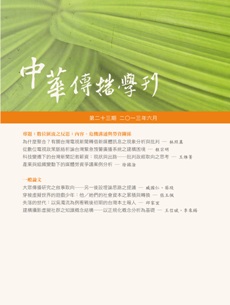 閱覽人數: 1835
閱覽人數: 1835
June
2013
No. 23
數位匯流之反思:內容、危機溝通與勞資關係
Content, Crisis Communication and Labor Relations: Reflections on Digital Convergence頁數:3 - 40
作者(中)
林照真
作者(英)
Chao Chen Lin
關鍵詞(中)
新媒體、新聞聚合、新聞專業、電視、聚合
關鍵詞(英)
new media, journalism convergence, journalism professionalism, television, convergence
中文摘要
電視新聞與新媒體進行新聞聚合的利弊分析,是數位新聞時代值得關注的現象。本研究採用新媒體科技為研究觀點,分別從新聞文本與新聞實務工作切入,先針對台灣七家廿四小時新聞台達兩個月的電視新聞進行內容分析,再與電視新聞主管與基層記者進行深度訪談。本研究發現,電視台使用新媒體現象顯著;電視多是藉用新媒體以便獲取更多有關社會、影劇八卦、犯罪等新聞,目的則是為了追求廣告主所需的閱聽眾與經濟效益。本研究認為時下由傳統電視操作等與新媒體的聚合,已使電視新聞專業受到嚴重破壞。
英文摘要
The important issue of media convergence has been debated in the digital age, but is a topic that is rarely discussed regarding the convergence of journalism between television news and new media information, which has occurred in Taiwan. This study addresses the development from 2 perspectives, television news texts and its news practice, through the concept of “new media technology.” For 2 months we analyzed the content of seven 24-h television news channels that run between 6:00 PM and 8:00 PM, and conducted in-depth interviews with television news reporters and producers to examine how new media information has been incorporated in traditional television coverage. The results indicate that new media information has been overused, and has become the source of sensational news in traditional television. The goal of convergence journalism is to target the audience with advertising and to reap economic benefits, which deteriorates the professionalism of television reporting and editing.